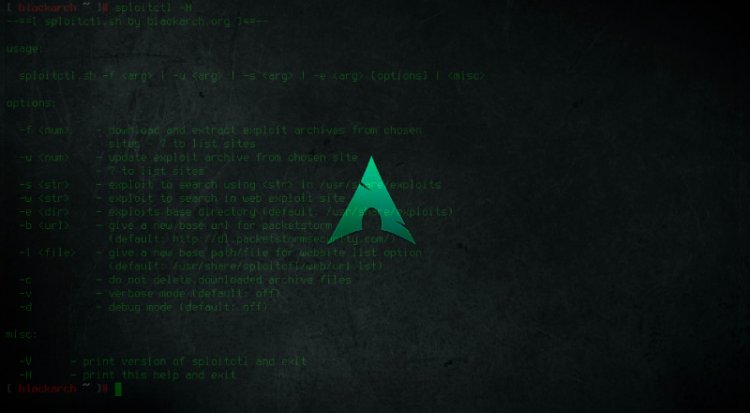Security Alert: Malicious Packages Infiltrate Arch Linux AUR with CHAOS RAT Malware
Critical security incident affects Arch Linux users as three malicious AUR packages containing CHAOS RAT malware were discovered and removed. Learn about the attack, affected packages, and essential security measures for AUR users.

Critical Security Breach: CHAOS RAT Malware Infiltrates Arch Linux AUR
The Arch Linux community faced a significant security incident this week when three malicious packages containing remote access trojan malware were discovered in the Arch User Repository (AUR). The attack, which remained undetected for two days, highlights critical vulnerabilities in community-maintained software repositories and serves as a stark reminder of the security risks inherent in user-submitted packages.
The Attack Timeline
Initial Upload and Spread
On July 16, 2025, at approximately 8 PM UTC+2, a user operating under the handle "danikpapas" uploaded the first malicious package to the AUR. Within hours, two additional compromised packages followed, all designed to appear as legitimate browser utility tools.
The malicious packages were:
-
librewolf-fix-bin - Masqueraded as a LibreWolf browser fix
-
firefox-patch-bin - Appeared to be a Firefox patch utility
-
zen-browser-patched-bin - Disguised as a Zen browser enhancement
Community Detection and Response
The packages remained available for 48 hours before community members flagged suspicious behavior in the package build scripts. On July 18, 2025, at around 6 PM UTC+2, the Arch Linux security team removed all three packages from the AUR and issued an official security advisory.
Technical Analysis of the Attack
CHAOS RAT Payload
The malware installed was identified as CHAOS Remote Access Trojan (RAT), a sophisticated piece of malware that provides attackers with comprehensive control over infected systems. The RAT's capabilities include:
-
Remote command execution with full system privileges
-
Data exfiltration from compromised machines
-
Reverse shell access for persistent backdoor entry
Attack Vector and Methodology
The attack exploited the inherent trust model of the AUR system. Each malicious package contained a "patches" source entry in their PKGBUILD files that pointed to an attacker-controlled GitHub repository:
text
https://github.com/danikpapas/zenbrowser-patch.git
During the package build process using makepkg, this repository was automatically cloned and executed, injecting malicious code without user awareness. The GitHub repository has since been deleted, eliminating the ability to analyze the complete attack infrastructure.
Exploitation of Build System Trust
The attack succeeded by exploiting makepkg's lack of sandboxing. Unlike containerized build systems, makepkg runs with significant system privileges, allowing malicious scripts to:
-
Install system services through systemd
-
Create persistent backdoors
-
Modify system configurations
Impact Assessment
Affected Users and Systems
While the exact number of affected systems remains unknown, the packages were available for download for two full days during peak usage hours. Users who installed any of the three packages during this window potentially have compromised systems requiring immediate attention.
Data Compromise Risks
Systems infected with CHAOS RAT face severe security risks:
-
Complete system compromise with root-level access
-
SSH key and credential theft from user directories
-
Network lateral movement capabilities for multi-system attacks
Immediate Response Actions
For Potentially Affected Users
If you installed any of the compromised packages, take these immediate steps:
-
Disconnect from network to prevent data exfiltration
-
Remove packages immediately using
pacman -R package-name -
Perform complete system audit for unauthorized access
-
Rotate all credentials including SSH keys and passwords
System Security Verification
Check for compromise indicators:
-
Review system logs for unauthorized access attempts
-
Examine running processes for suspicious activity
-
Verify systemd services for unauthorized additions
AUR Security Challenges
Trust Model Limitations
This incident exposes fundamental security challenges in the AUR's community-driven trust model:
-
No automated security scanning of submitted packages
-
Minimal review process for new package submissions
-
Reliance on community vigilance for threat detection
Historical Context
This marks the first confirmed widespread malware distribution through AUR packages in 2025, though similar incidents occurred previously. In 2018, malware was discovered in AUR packages including "acroread," demonstrating that this threat vector has been exploited before.
Enhanced Security Recommendations
Pre-Installation Verification
Implement these security practices when using AUR:
Always review PKGBUILD files before installation:
bash
git clone https://aur.archlinux.org/package-name.git cd package-name less PKGBUILD # Review build script thoroughly
Verify package maintainers and check their reputation within the community before trusting their packages.
Advanced Protection Measures
Use containerized building with tools like:
-
systemd-nspawn containers for isolated builds
-
Docker-based AUR helpers for sandboxed compilation
Implement network monitoring to detect suspicious outbound connections during and after package installation.
AUR Helper Configuration
Configure AUR helpers with enhanced security:
-
Enable build script review before compilation
-
Use tools like
aurutilsthat support build isolation
Community and Distribution Response
Arch Linux Security Team Actions
The Arch Linux security team demonstrated rapid response capabilities by:
-
Removing malicious packages within hours of community reports
-
Issuing comprehensive security advisories
-
Suspending the malicious user account
Broader Linux Security Implications
This incident highlights supply chain security risks affecting all Linux distributions that rely on community-maintained repositories. Similar vulnerabilities exist in:
-
Ubuntu PPAs and third-party repositories
-
Flatpak and Snap package ecosystems
Prevention and Future Security
Individual User Security
Adopt a security-first mindset when installing software:
-
Prefer official repository packages over AUR when available
-
Research unfamiliar packages and their maintainers
-
Use dedicated test systems for trying new software
Community Initiatives
The Linux community is exploring enhanced security measures:
-
Automated scanning tools for detecting malicious code patterns
-
Package signing systems for cryptographic verification
-
Reputation systems for package maintainer trustworthiness
This security incident serves as a crucial reminder that even trusted, community-driven repositories can become attack vectors. While the AUR remains an invaluable resource for Arch Linux users, this event underscores the critical importance of maintaining vigilant security practices and thorough package verification before installation.
What's Your Reaction?






















